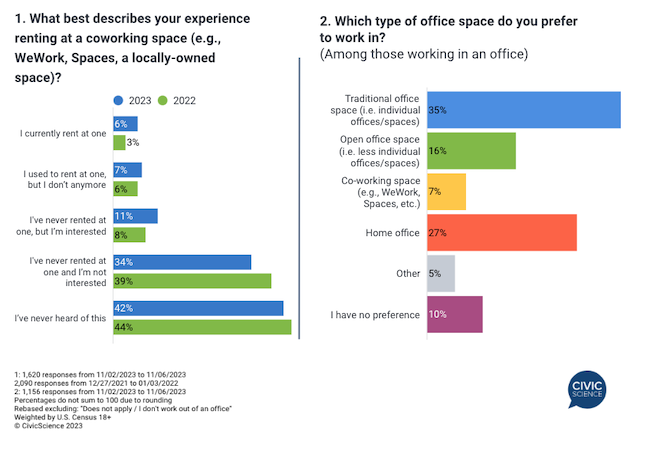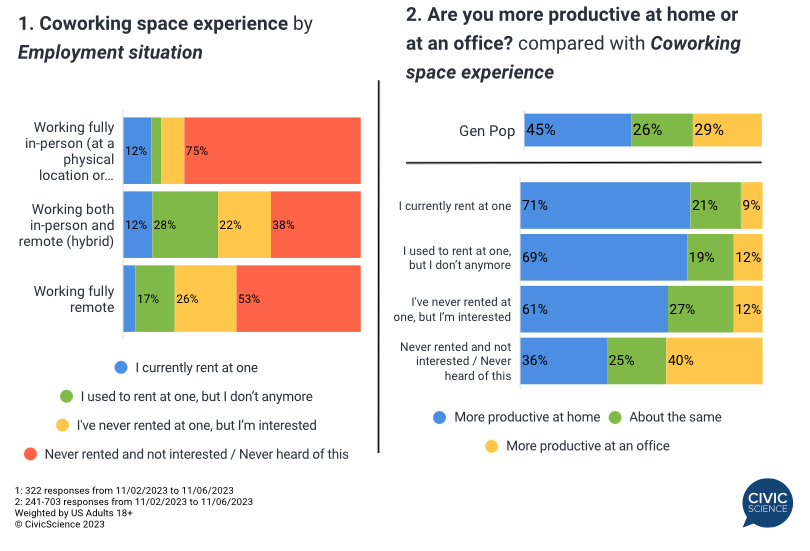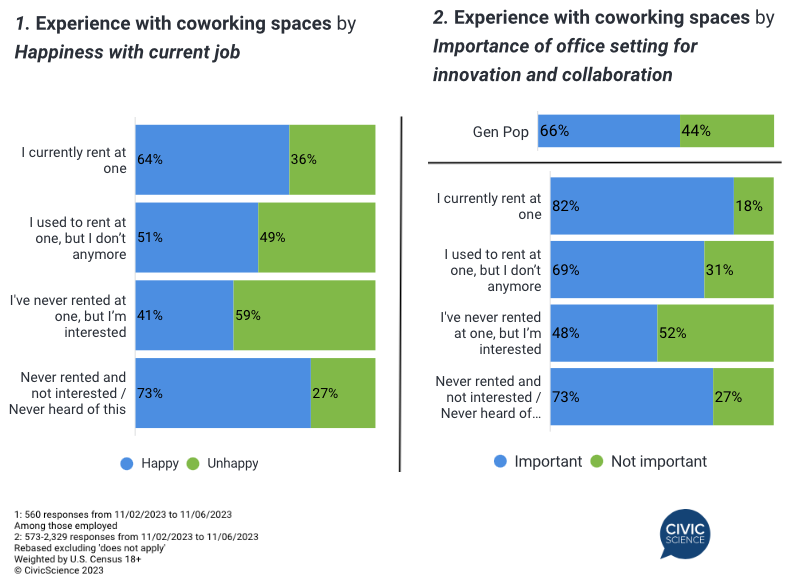Coworking space usage increases, but consumers prefer working from home
Editor’s note: Andrew Gallant is the marketing specialist at CivicScience. This is an edited version of an article that originally appeared under the title “Coworking Space Usage Doubles, Though Consumers Still Prefer Working at Home.”
WeWork, a coworking space provider, is poised to declare bankruptcy as the trading of its shares has been halted. The company is grappling with rising operating costs, a demanding commercial real estate lending climate and the shift to remote working. As the industry looks on, who might coworking companies look to in hopes of potentially mitigating some effects of the current economic headwinds impacting WeWork? Here are fresh insights into the picture of office sharing today.
Traditional and home office spaces are preferred
Previous CivicScience data from January found some potential for coworking spaces like WeWork despite heightened levels of COVID-19 at the time. The latest update of CivicScience’s ongoing tracking shows the percentage of those who are currently utilizing coworking spaces has doubled from 2022, with a corresponding drop in those not interested. Intent to try a coworking space has also increased by three points to 11%.
Gen Z and Millennials continue to dominate demand, with both groups being more than three times as likely as older adults to be current users. For those who typically work out of an office, their preferred office type has changed very little year-over-year. Traditional office spaces remain the favorite office environment, eight percentage points ahead of the next closest option, the home office. The percentage of those who most prefer working in coworking spaces remains low and has ticked down a point to 7%.

Who uses coworking spaces?
Remote workers continue to dominate the coworking space, but hybrid workers are more than twice as likely as fully remote workers to report coworking space usage. It’s important to note, however, that hybrid workers are far more likely to say they used to rent a space but no longer do so.
On the flip side, slightly more than a quarter (26%) of fully remote workers intend to try a coworking space, four points higher than hybrid workers. Those acquainted with and those intending to try office sharing spaces are significantly more likely than the general population and those uninterested to say that they’re “more productive” working at home. Only 9% and 12% of users and intenders, respectively, claim higher productivity in the office, compared to 40% of those uninterested in office sharing spaces.

Coworking users value collaborative work environments
Nearly two-thirds of office sharing users say they’re happy at their current job, more than 20 points higher than intenders, where the majority (59%) are unhappy. That said, consumers uninterested in these spaces are the most likely to report satisfaction with their current employment situation.
More than eight-in-10 current office sharing users believe working in an office setting is at least somewhat important for collaboration and innovation, 16 points higher than U.S. adults (excluding “does not apply”). Interestingly, those utilizing a coworking space are 34 points more likely than prospective coworking users to hold this belief, compared to just nine points more than those uninterested.

The road for WeWork has been a rough one and it will be difficult for the industry to overcome the preference for the home office. Still, hybrid and remote workers show at least some interest in utilizing a coworking space in the future, even if most feel they work better from home. Can they keep demand alive for the rest of the industry through the uncertain economic climate?